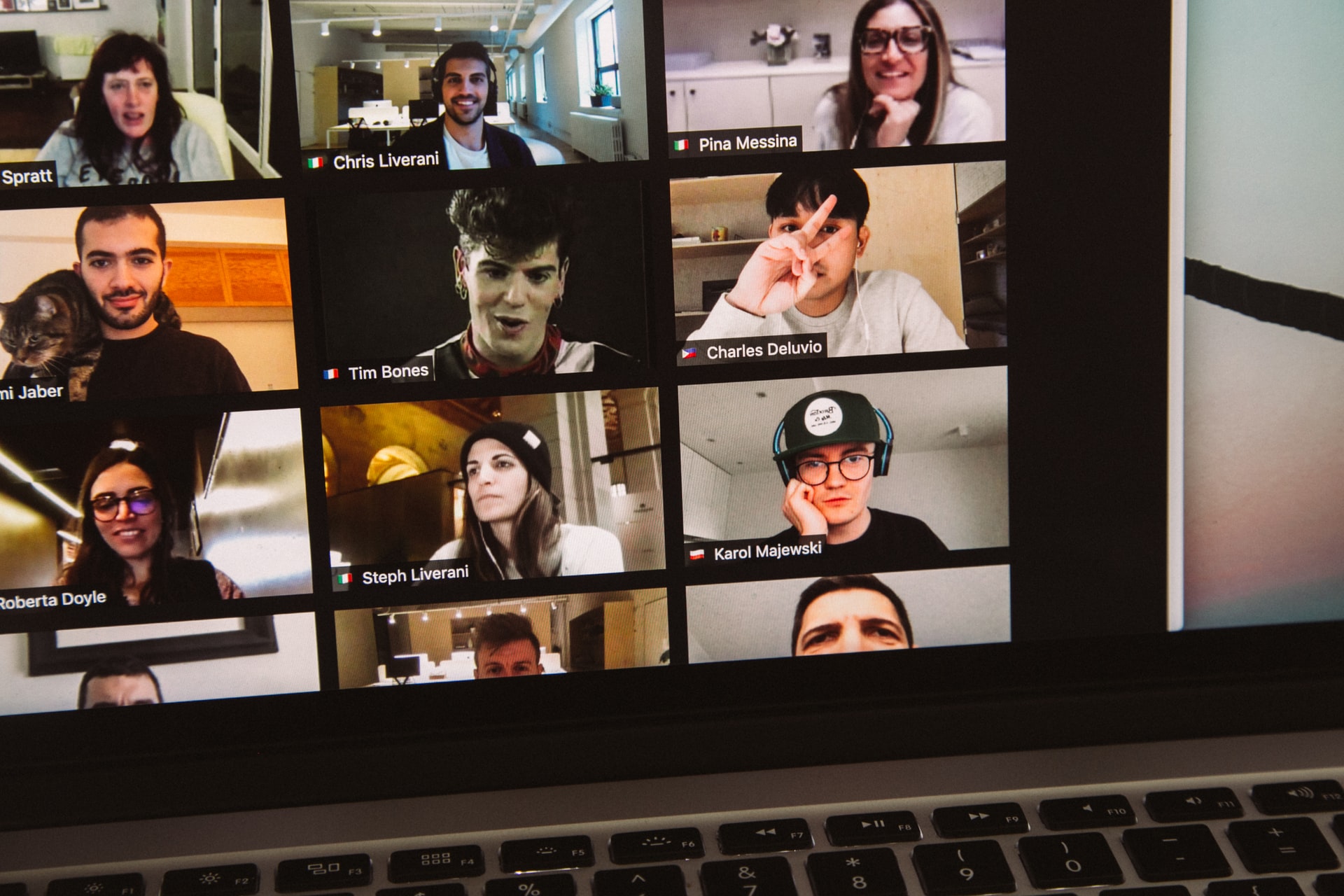So you started the pivot from a co-located work environment to the challenging (and somewhat dreaded) hybrid format or Model 3 workplace. You’re certainly in for an interesting journey.
Hybrid teams are the future of work. However, as with everything that is new, there are challenges to leading a hybrid workplace.
One of the biggest hurdles affecting hybrid work is effective collaboration. You spent months and years crafting a style of in-office collaboration and you don’t want to throw that all out now that you have a hybrid workforce.
It’s hard, but it can be done. You will need to get clear on important work principles and strive to both implement them within the team and embody them as a leader.
What is team collaboration?
Collaboration in the workplace occurs when a team effectively works together towards a common goal.
In order for teams to have good collaboration, the following components need to be present within the team and broader work culture:
- Effective leadership
- Communication
- Vulnerability
- Creativity
In a healthy hybrid team, good collaboration means:
- Leaders embody Model 3 working values
- Team members treat a digital tool as the HQ instead of the office
- Team members have equal access to each other and the boss
- Clear expectations on response times and availability
- Interpersonal relationships have room to flourish
How is collaboration negatively affected in a hybrid workforce?
Some might believe that collaboration works better in teams when everyone is co-located or digital. However the problems that affect hybrid work are related to leadership and communication – i.e, the same problems that impact every work modality.
Let’s flesh this out.
Inter-team communication is diminished
While communication between team members in individual teams is often strengthened in a hybrid workforce, inter-team communication takes a hit. A study by Microsoft found that inter-team networking is shrinking. Teams are “siloed” from other teams and this isolation could have an effect on the overall innovation of a company.
A team, B team
Another phenomenon that appears between teams in hybrid teams is an “us vs them” mentality. Hays, a global recruiter, found that it’s “very easy for unhelpful or negative attitudes about the ‘other’ group to slip in” in hybrid teams.
These negative attitudes form between team members working differently. For example, team members in the office feel that their remote colleagues have it easier because they don’t have to commute. Similarly, remote team members feel left out during meetings where in-office workers tend to be more heard and dominant.
If these sentiments aren’t effectively addressed and resolved by team leaders, they can have a significant detrimental effect on company output.
Relationships between coworkers are too formal
When a company becomes digital, a lot of the typical opportunities for relationship building between team members are lost. It’s harder for intimate friendships to flourish in a hybrid workforce.
In many digital teams, all of your interactions are scheduled. They don’t happen serendipitously. Even if you create time for games to play on Zoom with coworkers, you still have to put it on the calendar.
Yet at the same time, 2020 forced us to open up and share more with our colleagues. A Microsoft study found that 17 percent of workers cried with a colleague during 2020. Crying at work is actually common and understandable in the face of a pandemic.
While team members can work efficiently together even if they aren’t friends, it’s important that your team members feel supported. And team members who feel supported work better within the team and produce greater output.
Leadership bias
In a Model 3 work setting, leadership bias can be a problem and makes certain team members feel excluded. Generally, leaders who are in the office are biased towards employees working at the office.
In-office leaders tend to be biased towards in-office team members in a hybrid workforce for a few reasons:
- They struggle to let go of the Model 1 values that prefer employees to be co-located
- They tend to measure employee productivity with outdated metrics like presenteeism
When a leader prefers one work modality, the team notices. Here’s how bias usually manifests itself:
- Leaders signal to the team that in-office work is preferable
- During meetings, remote coworkers aren’t given the same opportunities to be proactive
- Remote workers feel that their in-office counterparts are more appreciated
- Digital team members end up feeling undervalued, insecure in their jobs and resentful towards leadership and other teams
Allowing for a hybrid workplace is not enough for a healthy, thriving work environment. Equality between teams has to be established.
How can you improve collaboration in your hybrid workforce?
The key to your team’s success in hybrid work is in showing them that you’re committed to the process. Here are strategies you can implement to get your team on the right track.
Rally the team around the tech
You can solve the bias problem by letting your team know that while the workplace is hybrid, everyone is working out of one place – and that’s the digital platform you’re using.
Team members will know that there is one location where everyone confers and interacting with the tech is more important than being in the office or working remotely.
Create opportunities for chit-chat/casual team building
In the office, there are plenty of opportunities for small talk – like when coworkers hover over the printer, meet in the kitchen area, or chat on the way to a meeting. In distributed teams, most of those are lost.
You’ll need to reintroduce those opportunities into the team. Some ways include:
- Plan to arrive a few minutes late to meetings so team members can chat
- Use check in questions to get to know each other better
- Once a meeting is over, use break out rooms to simulate those after-meeting conversations
- Creating a group channel where teams only share memes or stories unrelated to work
- Scheduling team building activities unrelated to work
Overhaul the meeting format
In a Model 3 workplace, team meetings occur with everyone present digitally. That in itself can be challenging. But you will have to plan ahead to ensure that in-office members and distributed folks can log in. Once you’ve done that, the meetings can be made fair for everyone by:
- Having the leader attend meeting remotely
- Starting and ending the meeting at the same time for everyone
- Using a digital platform to write/draw on instead of a white board
- Halting meetings when any member experiences technical difficulty
These implementations may not be easy and will take time, but they will be crucial for collaboration to work for your hybrid teams.
Encourage communication between teams
You want to maximise creativity in your hybrid workforce, and this can be done by strengthening inter-team communication and collaboration. You can encourage communication between teams by holding company wide meetings or ones with more than one team.
Try to find a time when everyone is available – that will be your main challenge. Make these meetings recurring if you can – so team members know to expect them. During meetings, allow time for small talk so that coworkers have opportunities to mingle freely with their colleagues.
When you do call everyone to the office, try to mix teams together so there is more exposure to others in the others in the hybrid workforce.
Hybrid work is still in its early days so teams and leaders are learning on the go. Teams will get better and leaders will improve at optimizing hybrid work environments and collaboration for their teams.
The most important thing leaders can do when they’re starting out is to show their teams that they’re deeply committed to making a hybrid workforce successful and meaningful for everyone.
Photo by Charles Deluvio on Unsplash
So you started the pivot from a co-located work environment to the challenging (and somewhat dreaded) hybrid format or Model 3 workplace. You’re certainly in for an interesting journey.
Hybrid teams are the future of work. However, as with everything that is new, there are challenges to leading a hybrid workplace.
One of the biggest hurdles affecting hybrid work is effective collaboration. You spent months and years crafting a style of in-office collaboration and you don’t want to throw that all out now that you have a hybrid workforce.
It’s hard, but it can be done. You will need to get clear on important work principles and strive to both implement them within the team and embody them as a leader.
What is team collaboration?
Collaboration in the workplace occurs when a team effectively works together towards a common goal.
In order for teams to have good collaboration, the following components need to be present within the team and broader work culture:
- Effective leadership
- Communication
- Vulnerability
- Creativity
In a healthy hybrid team, good collaboration means:
- Leaders embody Model 3 working values
- Team members treat a digital tool as the HQ instead of the office
- Team members have equal access to each other and the boss
- Clear expectations on response times and availability
- Interpersonal relationships have room to flourish
How is collaboration negatively affected in a hybrid workforce?
Some might believe that collaboration works better in teams when everyone is co-located or digital. However the problems that affect hybrid work are related to leadership and communication – i.e, the same problems that impact every work modality.
Let’s flesh this out.
Inter-team communication is diminished
While communication between team members in individual teams is often strengthened in a hybrid workforce, inter-team communication takes a hit. A study by Microsoft found that inter-team networking is shrinking. Teams are “siloed” from other teams and this isolation could have an effect on the overall innovation of a company.
A team, B team
Another phenomenon that appears between teams in hybrid teams is an “us vs them” mentality. Hays, a global recruiter, found that it’s “very easy for unhelpful or negative attitudes about the ‘other’ group to slip in” in hybrid teams.
These negative attitudes form between team members working differently. For example, team members in the office feel that their remote colleagues have it easier because they don’t have to commute. Similarly, remote team members feel left out during meetings where in-office workers tend to be more heard and dominant.
If these sentiments aren’t effectively addressed and resolved by team leaders, they can have a significant detrimental effect on company output.
Relationships between coworkers are too formal
When a company becomes digital, a lot of the typical opportunities for relationship building between team members are lost. It’s harder for intimate friendships to flourish in a hybrid workforce.
In many digital teams, all of your interactions are scheduled. They don’t happen serendipitously. Even if you create time for games to play on Zoom with coworkers, you still have to put it on the calendar.
Yet at the same time, 2020 forced us to open up and share more with our colleagues. A Microsoft study found that 17 percent of workers cried with a colleague during 2020. Crying at work is actually common and understandable in the face of a pandemic.
While team members can work efficiently together even if they aren’t friends, it’s important that your team members feel supported. And team members who feel supported work better within the team and produce greater output.
Leadership bias
In a Model 3 work setting, leadership bias can be a problem and makes certain team members feel excluded. Generally, leaders who are in the office are biased towards employees working at the office.
In-office leaders tend to be biased towards in-office team members in a hybrid workforce for a few reasons:
- They struggle to let go of the Model 1 values that prefer employees to be co-located
- They tend to measure employee productivity with outdated metrics like presenteeism
When a leader prefers one work modality, the team notices. Here’s how bias usually manifests itself:
- Leaders signal to the team that in-office work is preferable
- During meetings, remote coworkers aren’t given the same opportunities to be proactive
- Remote workers feel that their in-office counterparts are more appreciated
- Digital team members end up feeling undervalued, insecure in their jobs and resentful towards leadership and other teams
Allowing for a hybrid workplace is not enough for a healthy, thriving work environment. Equality between teams has to be established.
How can you improve collaboration in your hybrid workforce?
The key to your team’s success in hybrid work is in showing them that you’re committed to the process. Here are strategies you can implement to get your team on the right track.
Rally the team around the tech
You can solve the bias problem by letting your team know that while the workplace is hybrid, everyone is working out of one place – and that’s the digital platform you’re using.
Team members will know that there is one location where everyone confers and interacting with the tech is more important than being in the office or working remotely.
Create opportunities for chit-chat/casual team building
In the office, there are plenty of opportunities for small talk – like when coworkers hover over the printer, meet in the kitchen area, or chat on the way to a meeting. In distributed teams, most of those are lost.
You’ll need to reintroduce those opportunities into the team. Some ways include:
- Plan to arrive a few minutes late to meetings so team members can chat
- Use check in questions to get to know each other better
- Once a meeting is over, use break out rooms to simulate those after-meeting conversations
- Creating a group channel where teams only share memes or stories unrelated to work
- Scheduling team building activities unrelated to work
Overhaul the meeting format
In a Model 3 workplace, team meetings occur with everyone present digitally. That in itself can be challenging. But you will have to plan ahead to ensure that in-office members and distributed folks can log in. Once you’ve done that, the meetings can be made fair for everyone by:
- Having the leader attend meeting remotely
- Starting and ending the meeting at the same time for everyone
- Using a digital platform to write/draw on instead of a white board
- Halting meetings when any member experiences technical difficulty
These implementations may not be easy and will take time, but they will be crucial for collaboration to work for your hybrid teams.
Encourage communication between teams
You want to maximise creativity in your hybrid workforce, and this can be done by strengthening inter-team communication and collaboration. You can encourage communication between teams by holding company wide meetings or ones with more than one team.
Try to find a time when everyone is available – that will be your main challenge. Make these meetings recurring if you can – so team members know to expect them. During meetings, allow time for small talk so that coworkers have opportunities to mingle freely with their colleagues.
When you do call everyone to the office, try to mix teams together so there is more exposure to others in the others in the hybrid workforce.
Hybrid work is still in its early days so teams and leaders are learning on the go. Teams will get better and leaders will improve at optimizing hybrid work environments and collaboration for their teams.
The most important thing leaders can do when they’re starting out is to show their teams that they’re deeply committed to making a hybrid workforce successful and meaningful for everyone.
Photo by Charles Deluvio on Unsplash
)
)
)







